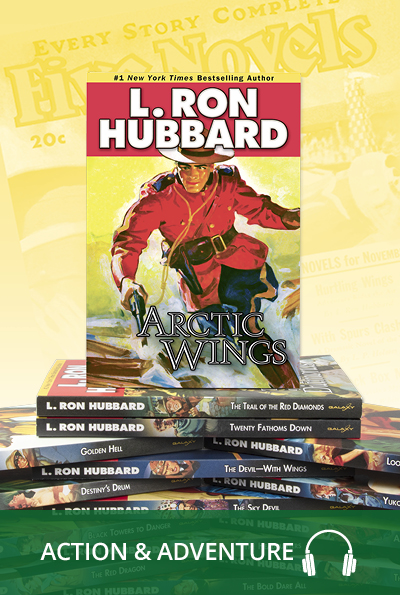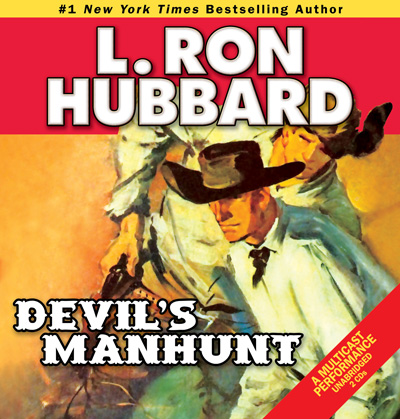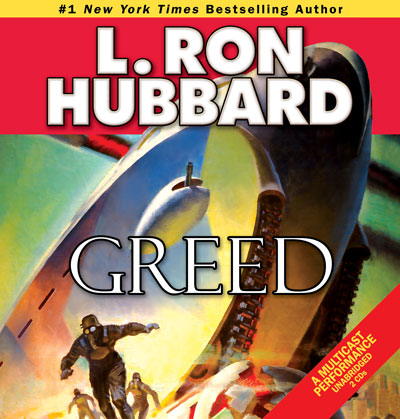Golden Hell Glossary
Stories from the Golden Age reflect the words and expressions used in the 1930s and 1940s, adding unique flavor and authenticity to the tales. While a character’s speech may often reflect regional origins, it also can convey attitudes common in the day. So that readers can better grasp such cultural and historical terms, uncommon words or expressions of the era, the following glossary has been provided.
Aloadin or Hasan ibn Sabbah: leader of an Islamic religious cult called the Ismalilis and later the Assassins, derived from the Arabic word meaning “smokers of hashish.” The Assassins resided in a pirate state and terrorized western Asia in the twelfth and thirteenth centuries by attacking the heads of government and religious leaders. Aloadin exerted a strong power over his followers. He created special gardens where actual milk and honey flowed and where beautiful damsels skilled in dancing and music sported in the gardens and palaces. Through the use of hashish, he cast the young men into a deep sleep, whereupon they awoke in “paradise.” After spending a few days in the gardens they were promised to be returned there, dead or alive, in exchange for certain deeds. Thus assassinations were ordered and dedicatedly executed by these young men without regard for their personal lives.
bagaturs: (Mongolian) warriors, military commanders or epic heroes.
belaying pin: a large wooden or metal pin that fits into a hole in a rail on a ship or boat, and to which a rope can be fastened.
bitt: a vertical post, usually one of a pair, set on the deck of a ship and used for securing cables, lines for towing, etc.
black sand: a heavy, glossy, partly magnetic mixture of fine sands. Black sand is an indicator of the presence of gold or other precious metals.
bowsprit: a spar projecting from the upper end of the bow of a sailing vessel, for holding and supporting a sail.
bull fiddle: also called a bass fiddle; the largest and lowest member of the violin family.
bulwarks: solid walls enclosing the perimeters of a weather or main deck for the protection of persons or objects on deck.
Chamorro: a people inhabiting the Mariana Islands; also the language of these people.
copra: the dried kernel or meat of the coconut from which coconut oil is obtained.
Coral Sea: southwest arm of the Pacific Ocean, extending from the western Australian coast more than 1,400 miles (2,253 km) east to the New Hebrides Islands and to New Guinea and the Solomon Islands in the north. The Great Barrier Reef lies along its western edge.
Cossacks: members of a people of southern European Russia and adjacent parts of Asia, noted as cavalrymen especially during tzarist times. The Cossacks, known for their horses and horsemanship, were considered to be unequaled anywhere on Earth. In 1892, a troupe of Cossack daredevil riders joined the Buffalo Bill’s Wild West show, traveling to London and then to America in 1893. Intrigued by the Cossacks’ trick riding and stunts on their galloping horses, the Western cowboys soon introduced variations to American rodeo.
crosstree: the raised wooden pieces at the front and rear of the saddle that form a high pommel or horn in the front and cantle in the back.
Dante: Dante Alighieri (1265–1321), Italian poet best known for his work The Divine Comedy, which is the story of a journey through Hell, Purgatory and Paradise. The journey through Hell is often referred to independently as “Dante’s Inferno.”
davits: any of various cranelike devices, used singly or in pairs, for supporting, raising and lowering boats, anchors and cargo over a hatchway or side of a ship.
double eagle: a gold coin of the US with a denomination of twenty dollars, produced from 1850 to 1933. Prior to 1850, eagles with a denomination of ten dollars were the largest denomination of US coin, and since the twenty-dollar gold piece had twice the value of the eagle, it was designated a “double eagle.”
Drake: Sir Francis Drake (1545–1596); British admiral, explorer and privateer. He was the first Englishman to circumnavigate the globe. A naval war hero, his legendary defeat of the Spanish Armada off the southern coast of England in 1588 was the turning point for England’s rise to naval power. The Spanish referred to Drake as a pirate and nicknamed him The Dragon.
ducks: slacks or trousers; pants made of a heavy, plain-weave cotton fabric.
dum: a bullet with a soft front that increases in size when it hits its target, causing serious injuries. Also called dum-dum bullets.
forked saddle: a saddle designed with a fork at the front, as on a Western saddle. The fork, which provides the base for the horn, is the piece that holds together the two parallel bars that rest along both sides of the horse’s back. Originally, this part of the saddle’s structure was made from the fork of a tree, hence its name. It is the structural piece that gives the front of the saddle its characteristic shape.
Genghis Khan: (1162?–1227) Mongol conqueror who founded the largest land empire in history and whose armies, known for their use of terror, conquered many territories and slaughtered the populations of entire cities.
G-men: government men; agents of the Federal Bureau of Investigation.
Gobi: Asia’s largest desert, located in China and southern Mongolia.
Golden Mountains: also known as the Altay Mountains; “Altay” means “Mountains of Gold” in Mongolian. The mountains are located in Central Asia where Russia, China and Mongolia come together.
Gran Chaco: region in south central South America, covering about 250,000 square miles (647,500 sq km), and encompassing part of Argentina, Paraguay and Bolivia. It is the location of the Chaco War (1932–1935), a border dispute fought between Bolivia and Paraguay over control of a great part of this region of South America that was incorrectly thought to be rich in oil.
grappling hooks: composite hooks attached to ropes designed to be thrown or projected a distance so that the hooks will engage with the target.
gunwale: the upper edge of the side of a boat. Originally a gunwale was a platform where guns were mounted, and was designed to accommodate the additional stresses imposed by the artillery being used.
halyards: ropes used for raising and lowering sails.
Headless Horseman: from the short story written in 1812 by Washington Irving called “The Legend of Sleepy Hollow.” Schoolmaster Ichabod Crane of the town of Sleepy Hollow, dismissing the legend of the Headless Horseman, later flees in terror from the Horseman and is chased over a bridge never to be seen again. The Headless Horseman, an undead ghostly character, was said to have lost his head to a cannon ball during an unnamed battle.
Hotel du Pekin: in the 1930s it was considered one of the finest hotels in the Orient. Built in 1917, the hotel had 200 rooms with baths, a tea hall with nightly dancing and its own orchestra for classical dinner music. It also had a spacious roof garden overlooking the Forbidden City and the Legation Quarter (walled city within the city exclusively for foreigners).
houris: in Muslim belief, any of the dark-eyed virgins of perfect beauty believed to live with the blessed in Paradise.
Kalgan: a city in northeast China near the Great Wall that served as both a commercial and a military center. Kalgan means “gate in a barrier” or “frontier” in Mongolian. It is the eastern entry into China from Inner Mongolia.
Khans: family of Mongol conquerors, beginning with Genghis Khan (1162?–1227), who founded the largest land empire in history and whose armies, known for their use of terror, conquered many territories and slaughtered the populations of entire cities. The Khan reign ended with Kublai Khan (1215–1294), military leader and grandson of Genghis Khan.
knot: a unit of speed, equal to one nautical mile, or about 1.15 miles, per hour.
Kobe: a seaport in southern Japan.
Kublai Khan: (1215–1294) military leader, grandson of Genghis Khan and the last ruler of the Khan empire.
longboat: the longest boat carried by a sailing ship.
Luray Cavern: a large underground cavern in Luray, Virginia, discovered in 1878.
Mammoth Cave: longest system of caves in the world with more than 365 miles (587 km) explored. It is located in south central Kentucky.
Mannlicher: a type of rifle equipped with a manually operated sliding bolt for loading cartridges for firing, as opposed to the more common rotating bolt of other rifles. Mannlicher rifles were considered reasonably strong and accurate.
Marco Polo: (1254?–1324?) Italian traveler who explored Asia (1271–1295). His book, The Travels of Marco Polo, was the only account of the Far East available to Europeans until the seventeenth century.
Mayas: a member of a group of Indian peoples, chiefly of Yucatán, Belize and Guatemala, whose languages are Mayan.
Melanesians: people native to a division of Oceania in the southwest Pacific Ocean, comprising the islands northeast of Australia and south of the equator. It includes the Solomon Islands. The Melanesian people primarily fish and farm, and supplement their economy by exporting cacao, copra (coconut) and copper.
Morgan: Sir Henry Morgan (1635?–1688), a Welsh buccaneer in the Americas. His brutal hostilities against the Spanish colonies in the Caribbean are known for their skillful execution, at times, against great odds. An exaggerated account of his exploits, written by one of his crew, created his popular reputation as a bloodthirsty pirate.
Nubians: natives or inhabitants of an area of southern Egypt and northern Sudan corresponding to the ancient region of Nubia.
oxide ore: mineralized rock in which some of the original minerals have been oxidized. Oxidation tends to make the ore more porous; that facilitates the flow of solutions into the rock. This effect is particularly important for oxidized gold ore, as it permits more complete permeation of cyanide solutions so that minute particles of gold in the interior of the mineral grains can be readily dissolved.
panner: a container in which gold, or other heavy and valuable metal, is separated from gravel or other substances by agitation.
Peking: now Beijing, China.
poop deck: a deck that constitutes the roof of a cabin built in the aft part of the ship. The name originates from the Latin puppis, for the elevated stern deck.
quarterdeck: the rear part of the upper deck of a ship, usually reserved for officers.
quirt: a riding whip with a short handle and a braided leather lash.
rovers: pirates.
rudder: a means of steering a boat or ship, usually in the form of a pivoting blade under the water, mounted at the stern and controlled by a wheel or handle.
rudder chains: loose chains or ropes that fasten the rudder to the ship to prevent its loss in case it gets out of position, and for operating it in case the wheel is broken.
Scheherazade: the female narrator of The Arabian Nights, who during one thousand and one adventurous nights saved her life by entertaining her husband, the king, with stories.
schooner: a fast sailing ship with at least two masts and with sails set lengthwise.
scuppers: gutters along the edge of the deck that drain into openings in the side of a ship that allow water to run off.
Shamo desert: Chinese name for the Gobi Desert; Asia’s largest desert located in China and southern Mongolia.
single jack: working with a single jack, a short-handled hammer with a three- to four-pound head, used for punching holes in rock.
Snider: a rifle formerly used in the British service. It was invented by American Jacob Snider in the mid-1800s. The Snider was a breech-loading rifle, derived from its muzzle-loading predecessor called the Enfield.
Solomon Islands: a group of islands northeast of Australia. They form a double chain of six large islands, about twenty medium-sized ones and numerous smaller islets and reefs.
sourdoughs: settlers or prospectors, especially in the western United States or northwest Canada and Alaska.
spent bullet: a bullet shot from a firearm that reaches an object without having sufficient force to penetrate or pass through it. Even if not fatal, a spent bullet can still cause serious injury.
Springfield: any of several types of rifle, named after Springfield, Massachusetts, the site of a federal armory that made the rifles.
Sunken Road at Waterloo: a sunken road that ran along a ridge and formed the allied lines in the Battle of Waterloo (1815). The sunken road hindered Napoleon’s attack on the British and allies, as the horsemen fell into the road that was invisible until they were upon it.
sweeps: long, heavy oars.
Taku: site of forts built in the 1500s to defend Tientsin against foreign invasion. The forts are located by the Hai River, 37 miles (60 km) southeast of Tientsin.
Tartar: a member of any of the various tribes, chiefly Mongolian and Turkish, who, originally under the leadership of Genghis Khan, overran Asia and much of eastern Europe in the Middle Ages. Also a member of the descendants of these people.
thwart: a seat across a boat, especially one used by a rower.
Tientsin: seaport located southeast of Peking; China’s third largest city and major transportation and trading center. Tientsin was a “Treaty Port,” a generic term used to denote Chinese cities open to foreign residence and trade, usually the result of a treaty.
Timur the Limper: (1336–1405) a name for Timur Lenk or Tamerlane meaning “Timur the Lame.” Timur was a Mongol conqueror and the name is supposed to have reflected the battle wounds he received.
Yellow Sea: an arm of the Pacific Ocean between the Chinese mainland and the Korean Peninsula. It connects with the East China Sea to the south.
Yucatán: a peninsula mostly in southeastern Mexico between the Caribbean Sea and the Gulf of Mexico.










